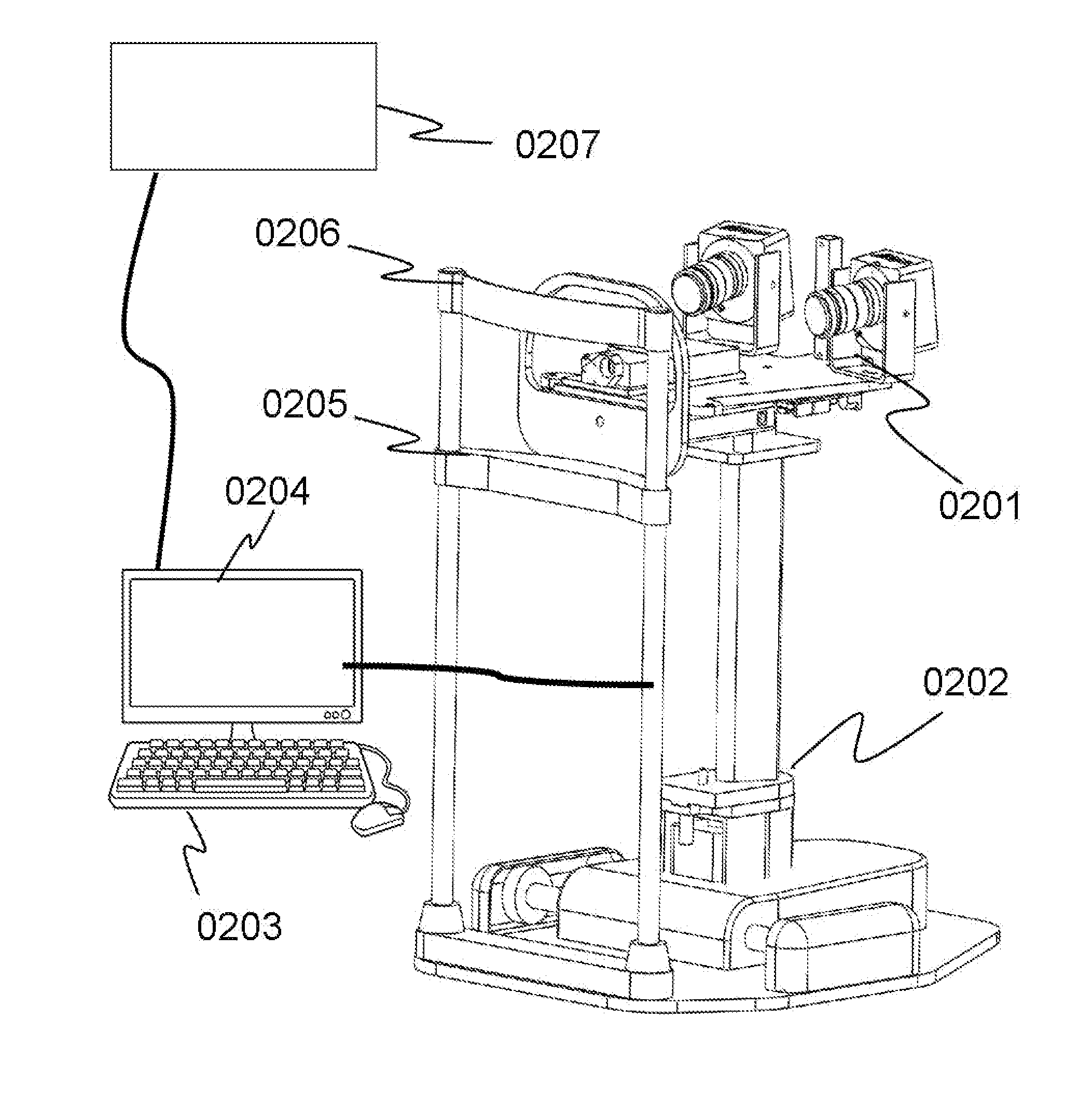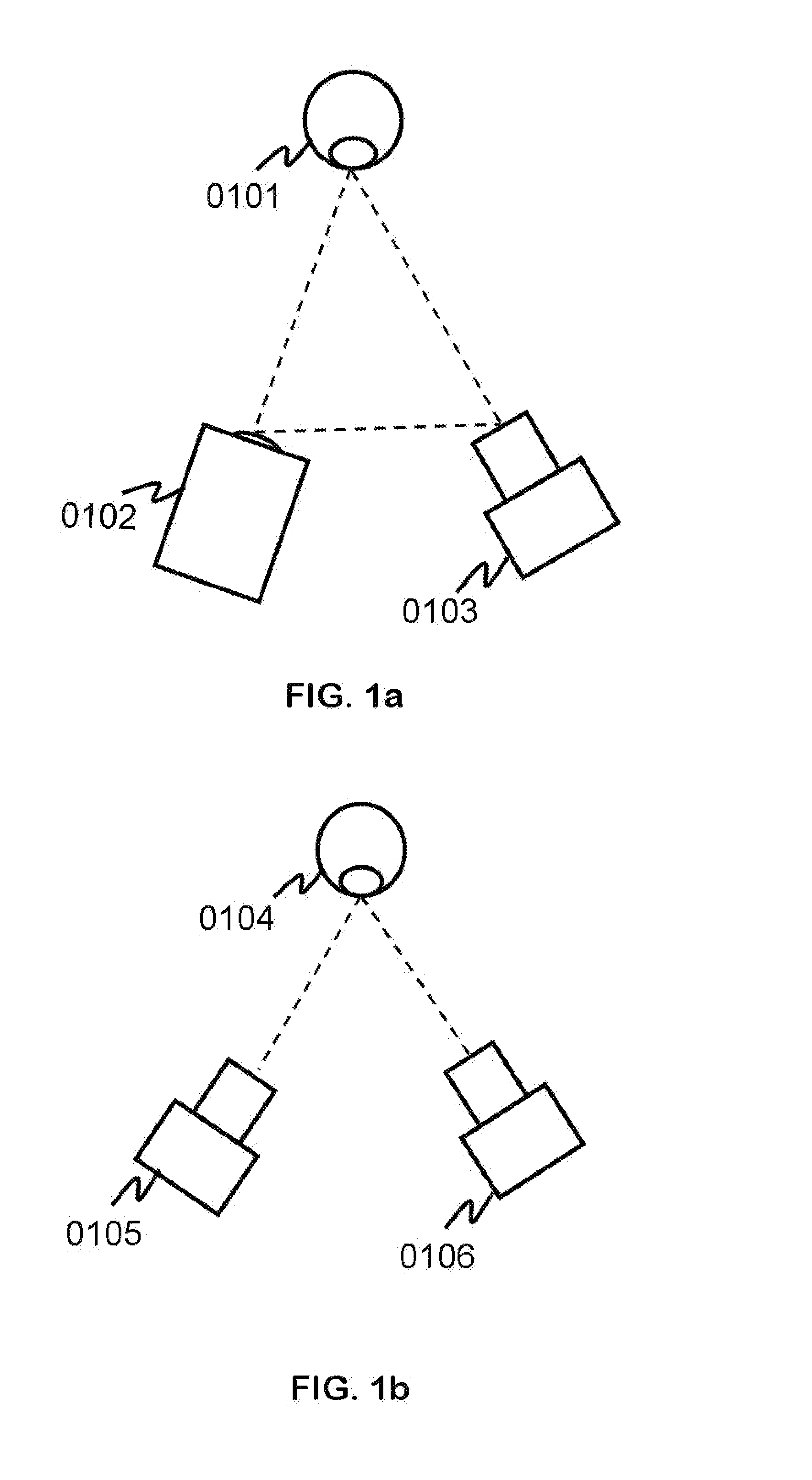Systems and methods for mapping the ocular surface
a technology of ocular surface and mapping method, which is applied in the field of three-dimensional imaging, can solve the problems of lack of data on the corneal periphery, lack of corneal periphery and sclera coverage needed for scleral lens fitting, and inability to measure scleral topography with placido disks
- Summary
- Abstract
- Description
- Claims
- Application Information
AI Technical Summary
Benefits of technology
Problems solved by technology
Method used
Image
Examples
embodiments
Additional Examples and Embodiments
[0091]In various embodiments, the systems and methods disclosed herein may achieve one, some, or all of the following advantages and / or provide some or all of the following functionality.
[0092]In some embodiments, three simultaneous independent measurements are used, which may advantageously provide error reduction in overlap regions through averaging, error reduction in overlap regions through constraints, wider field-of-view by having cameras out at angles to the surface to be measure, and / or more accurate tracking, because it may be difficult to use corneal points for tracking.
[0093]In some embodiments, coded structured light is used to map the surface of the object (e.g., the anterior surface of the eye). Pattern sequences can offer higher spatial resolution than single patterns, and unique pixel encoding can eliminate iterative point searching, which advantageously can increase speed and / or accuracy of the mapping.
[0094]In some implementations...
PUM
 Login to View More
Login to View More Abstract
Description
Claims
Application Information
 Login to View More
Login to View More - R&D
- Intellectual Property
- Life Sciences
- Materials
- Tech Scout
- Unparalleled Data Quality
- Higher Quality Content
- 60% Fewer Hallucinations
Browse by: Latest US Patents, China's latest patents, Technical Efficacy Thesaurus, Application Domain, Technology Topic, Popular Technical Reports.
© 2025 PatSnap. All rights reserved.Legal|Privacy policy|Modern Slavery Act Transparency Statement|Sitemap|About US| Contact US: help@patsnap.com



